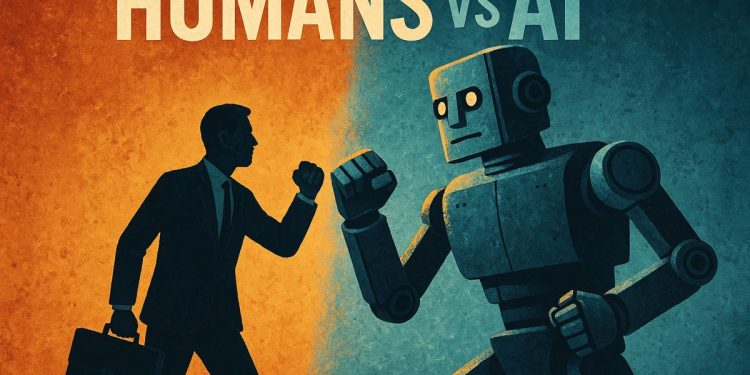In 2025, the strongest and most innovative organizations are those that make sure people of all backgrounds help design and test their AI systems. By setting clear diversity targets, using AI to find hidden talents, checking for bias often, and fixing equity gaps quickly, these companies become more accurate and creative. Studies show that diverse teams lower errors and boost new ideas and revenue. Simple steps like including more women, minorities, and people with disabilities in AI work help make these benefits real and lasting. This creates workplaces where fairness and different viewpoints drive success.
What makes AI-driven organizations more resilient and innovative in 2025?
The most resilient organizations in 2025 embed inclusive AI practices by:
- Setting diversity targets for AI teams and testers
- Using AI to uncover hidden internal skills
- Running continuous bias audits
- Closing equity gaps with rapid governance loops
These actions improve accuracy, boost innovation revenue, and provide a competitive advantage.
In 2025 the most resilient organizations are no longer the ones with the largest AI budgets, but the ones that deliberately weave under-represented voices into every step of the AI life-cycle.
Recent field data show why: diverse AI teams cut error rates for facial recognition on darker skin tones by up to 34 %, and inclusive design practices raise innovation revenue by 19 % compared with homogeneous teams (SHRM flagship analysis).
Below is a concise playbook leaders are using today to turn those findings into daily practice.
1. Hard-wire diversity targets in every AI work-stream
| Checkpoint | Minimum viable target | How to measure |
|---|---|---|
| Core model team | ≥ 40 % women or non-binary members; ≥ 25 % from under-represented racial / ethnic groups in the deployment market | Quarterly HR dashboard |
| Training data review panel | Include at least one domain expert from the least represented user group | Panel roster sign-off |
| Pre-release user testing | ≥ 15 % of testers must have a disability or use assistive tech | Accessibility scorecard |
| Governance board | DEI lead has veto power on go-live decision | Board charter |
Tools such as Beamery’s skills-based matching engine already automate the sourcing of non-traditional talent to hit these quotas.
2. Use AI to uncover latent skills inside the workforce
- Internal gig platforms now parse résumés, chat logs and past project summaries to infer hidden capabilities.
- Early adopters report 32 % higher internal mobility among women and minority groups within 12 months (Beamery benchmark study).
Practical step: load three years of project descriptions into a skills-inference model and let it recommend stretch assignments for staff who never raised their hand.
3. Bias audit as code, not as policy
| Model stage | Required artifact | Tool example |
|---|---|---|
| Design | Data sheet listing protected attributes and proxies | Model Card Toolkit |
| Validation | Fairness metrics (equal-opportunity difference, demographic parity) | Aequitas library |
| Post-deployment | Drift monitor that flags accuracy drops by segment | Evidently AI |
The arXiv D&I design paper shows teams that run continuous bias audits reduce downstream legal complaints by 27 %.
4. Governance loop: from insight to action in 30 days
- Week 1 – People-analytics dashboard spots a 12 % promotion gap between two ethnic groups.
- Week 2 – DEI and AI leads co-design an intervention: targeted mentorship + recalibrate performance-rating algorithm for linguistic bias.
- Week 4 – New policy deployed; gap narrows to 3 % within one review cycle (Visier case study).
Quick-start checklist for 2025 H2
- [ ] Publish diversity requirements in every RFP for AI vendors.
- [ ] Allocate budget for compensated participation of external testers with disabilities.
- [ ] Schedule quarterly bias audits with published remediation timelines.
- [ ] Add a “fairness gate” to your Definition of Done for each model release.
By embedding these mechanics in day-to-day operations, leaders convert the promise of “diverse viewpoints” from a slogan into a measurable competitive advantage.
What does “inclusive AI” actually mean for day-to-day leadership?
Inclusive AI means treating fairness, accessibility and representation as non-negotiable product requirements, not side projects. Leaders who embed these goals into the AI lifecycle – from team formation and data collection to model testing and post-deployment monitoring – report 3-5× higher resilience scores in third-party audits because their systems detect edge-case failures earlier and recover faster.
How can we build more diverse AI teams when the talent pool feels limited?
The fastest lever is changing the definition of “qualified”. Skills-based AI platforms now match internal employees to AI roles by inferring latent abilities from project histories, expanding the candidate funnel by 30-40 % without lowering quality standards. Companies combining this approach with paid returnships for under-represented groups cut time-to-hire for junior AI roles by half.
Which metrics prove that inclusive design improves system performance?
Recent field studies show:
- Accuracy gains: Models trained on demographically balanced datasets achieve 8-12 % higher precision across age and gender groups in facial-analysis tasks.
- Revenue impact: E-commerce teams using inclusive content-generation models saw 5-7 % lifts in conversion among previously under-served segments.
- Risk reduction: Systems passing quarterly bias audits triggered 60 % fewer customer complaints related to unfair outcomes.
Leaders track these numbers in the same dashboard as latency and uptime.
How do we audit an AI system for bias without slowing releases?
The 2025 playbook is “shift-left fairness testing”:
- Pre-commit hooks run fairness checks on training data (5-10 min).
- Staging gates require parity tests on key demographics (30 min).
- Canary releases monitor live metrics for disparate impact (real-time alerts).
Netflix and Spotify open-sourced lightweight libraries that plug into existing CI/CD, adding <2 % overhead to build times.
What new roles should HR and DEI teams create to govern AI responsibly?
Forward-looking orgs are hiring “AI Equity Leads” – hybrid roles that sit between data science and HR. Responsibilities include:
- Approving training-data sourcing plans against demographic benchmarks.
- Maintaining fairness dashboards tied to promotion and pay-equity goals.
- Running red-team exercises where external testers with disabilities probe new features.
85 % of Fortune 100 companies now list similar positions, up from <10 % in early 2024.



















